Poha or flattened rice is very commonly consumed in Indian households. The Poha, also a recipe by the same name as that of the ingredient in Hindi, is a popular dish in Maharashtrian cuisine. Primarily, one with onion and the other with onion and potato. However, there’s another classic variation, the Indori Poha which is made in a different style with a typical spice powder. This, along with the Jalebi, is a quintessential street food in cities of Madhya Pradesh, especially Indore. Here’s my recipe for the same. It is vegan too.
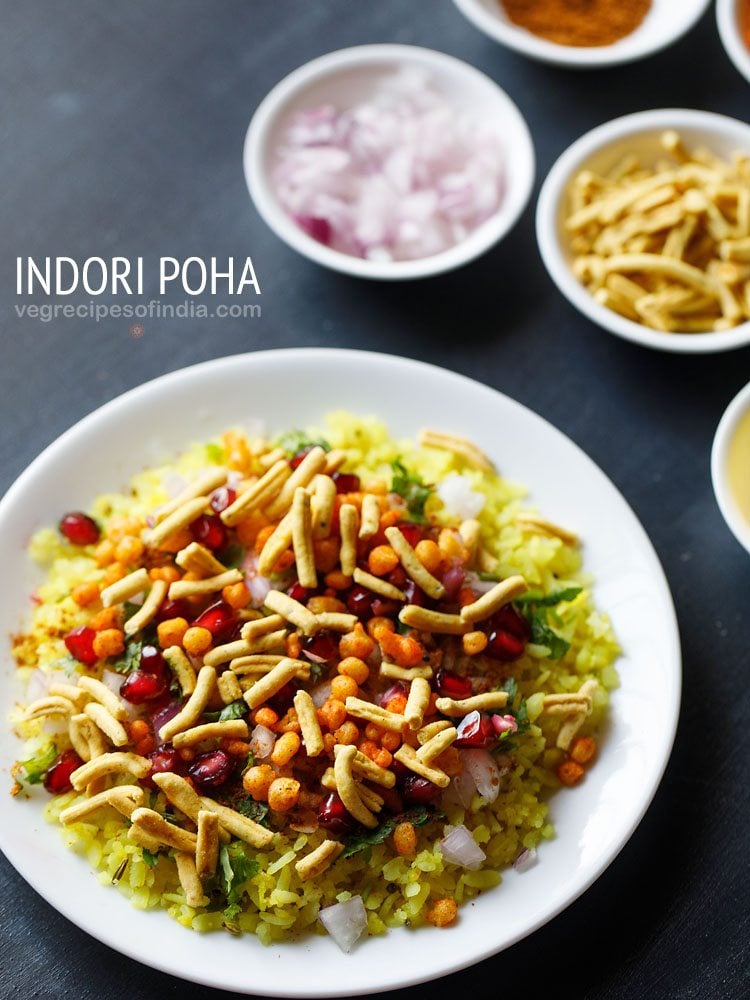
About Indori Poha
Poha (plural: pohe) essentially refers to 2 things – one, an ingredient, referred to as ‘flattened rice’ in English. Other, a dish made with this particular ingredient. In this post, I have shared the version which is famous in Indore, Madhya Pradesh in central India. Thus, rightly named as Indori Poha.
The Indori Poha is quite distinct than its Maharashtrian onion counterpart. One thing that differentiates it is the fact that in the Indore-style poha, onions are added as a topping and not sautéed. Along with onions, fresh pomegranate pearls, coriander leaves and some more special ingredients are added as toppings.
The taste of Indori Poha is khatta-meetha, meaning sour and sweet. For a sweet and floral undertone in the poha, fennel seeds are added too. Making this variation of poha is very easy. But you do need to have the unique ingredients – like jeeravan masala, nukti (masala boondi) and Indori or Ratlami sev – for the authentic taste.
Flattened rice, beaten rice or parched rice – all mean the same ingredient poha. It is made by first parboiling and then flattening the rice grains. This results in papery thin, crisp and dry rice flakes that can be easily broken or crumbled. However, there is a thicker variety of poha too, which I have also used in this Indori Poha.
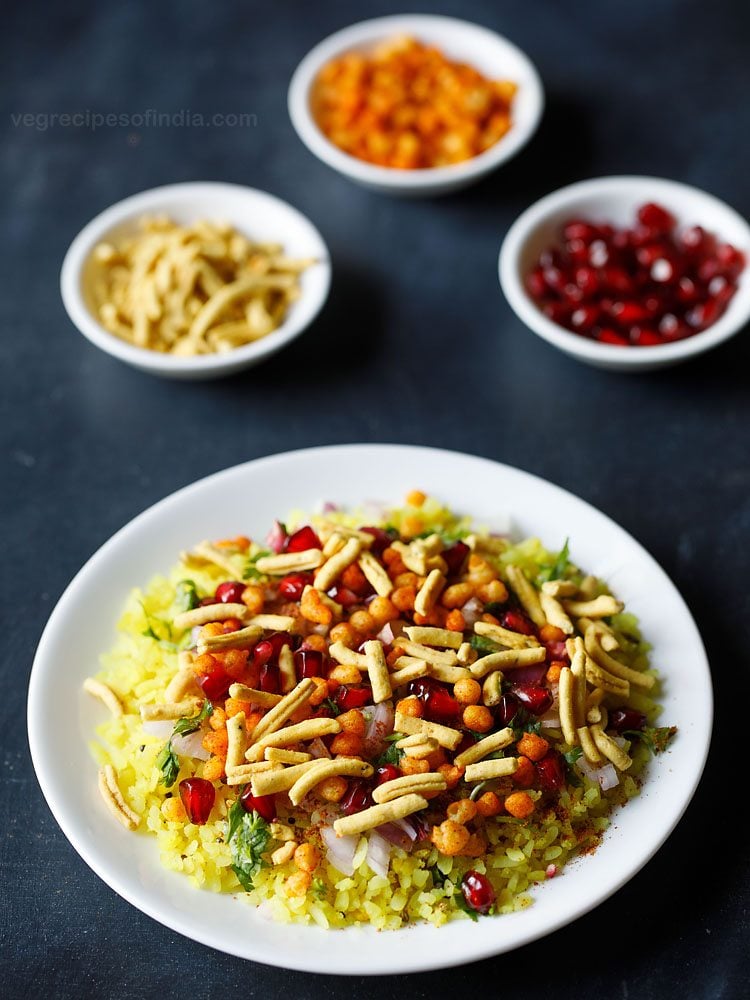
The most traditional recipe of an Indori Poha will always have the spicy spice blend called ‘jeeravan masala’ in it. It has a different taste altogether and cannot be compared to chaat masala or Garam Masala.
In addition to using this special spice mix for the Indori Poha, you can even add it to snacks like Dahi Vada, Samosa, Batata Vada, Kachori, fruit salad, sprouts salad, upma, potato chips or sandwiches. This will only enhance the flavors and make the dishes even more delish.
You might have difficulties in getting this masala in your area or locality. However, you can always rely on the world wide web for this. Just like I ordered it online, you can also to buy this spice mix online and use it for the recipe.
Since the time I had tried the Indori Poha, I had been wanting to make it at my home too and share the recipe. For the same, some recipe videos on YouTube were also referred by me. Later, using my own approximation for the ingredients, I finally created my own recipe.
It was a big hit at my place and thereafter, I kept making the Indori Poha gain and again. With this, I would also like you to try another iconic street food recipe from Indore – the Bhutte Ka Kees.
Like I said earlier, Indori Poha has a sweet, sour and spicy taste. The textures in this dish also range from soft to crispy to crunchy. So, in one plate you literally get a tsunami of flavors and textures.
Some more personal poha recipes that are a common at my place are this South Indian style Poha Upma and Chooda Matar from Uttar Pradesh in North India.
How to make Indori Poha
Preparation
1. First, get all the ingredients ready for Indori Poha. You will need 2 cups thick poha, 1 chopped green chili, 1 lemon, ¼ to ⅓ cup chopped onions, ¼ cup Indori sev, ¼ cup masala boondi or khara boondi (nukti), ¼ cup chopped coriander leaves, jeeravan masala and ¼ cup pomegranate arils (optional).
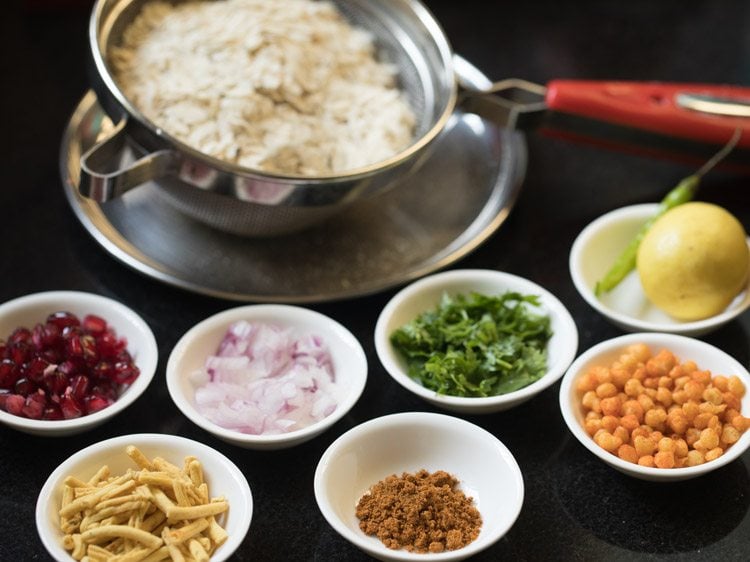
2. Jeeravan masala is one of the special ingredient masala that is added in Indori Poha. If you do not have it, then mix ¼ teaspoon coriander powder, ¼ teaspoon cumin powder, ¼ teaspoon garam masala powder, ¼ teaspoon red chili powder, 1 pinch black salt and 1 to 2 pinches ginger powder (saunth). Use this spice mix instead of jeeravan masala.
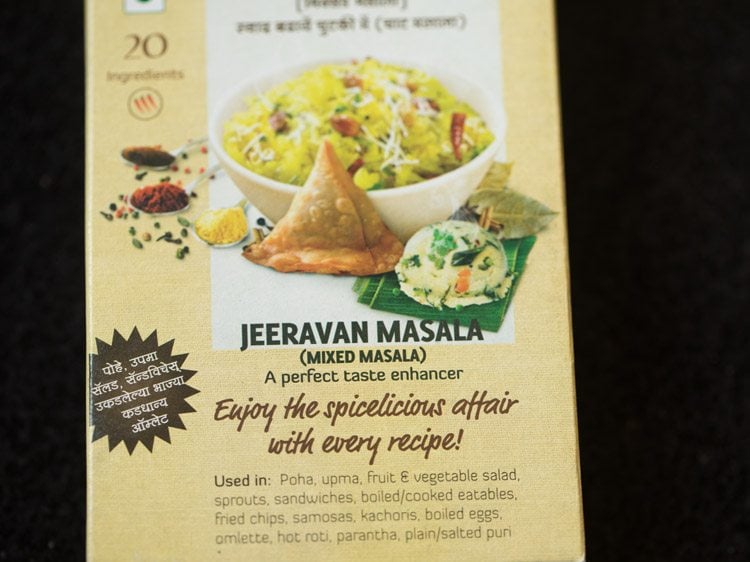
Rinsing poha
3. Take the thick poha in a colander or strainer.
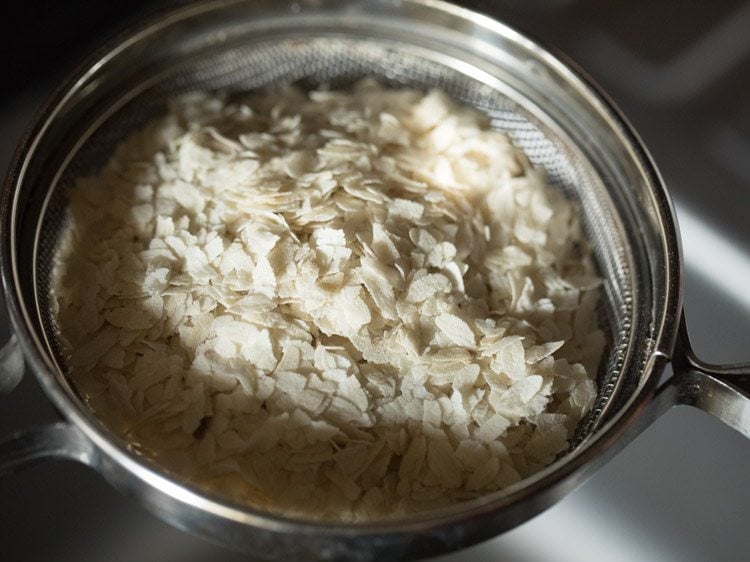
4. Begin to rinse the poha in clean running water.
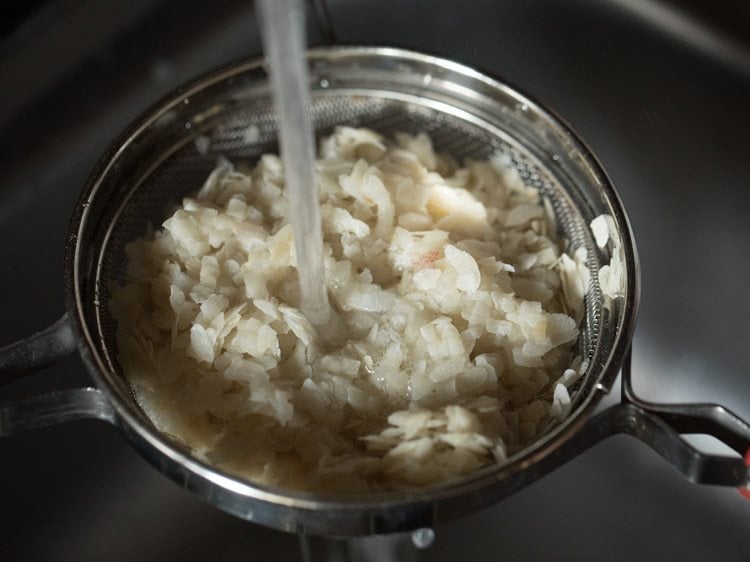
5. Gently mix and swirl with your hands while rinsing poha. Make sure that you do not rinse it too much or else it breaks and gets mushy. While rinsing, the poha absorbs enough water and it becomes soft.
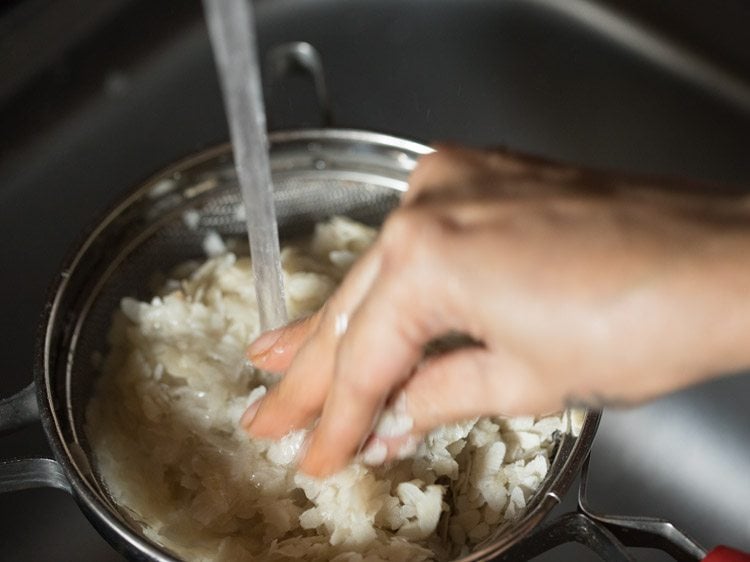
6. Drain the water. The poha must become soft but remain intact, whole and separate. If the poha does not become soft, sprinkle few drops of water on the poha in the strainer till they get softened.
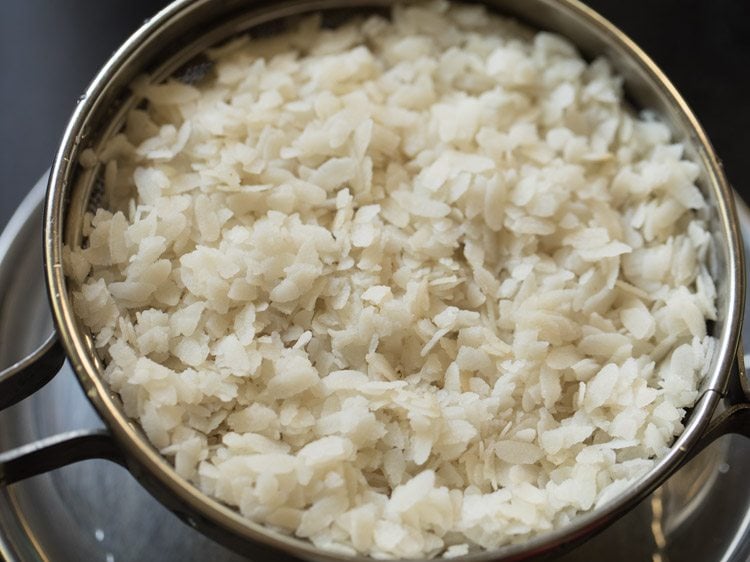
7. Take the poha in a mixing bowl.
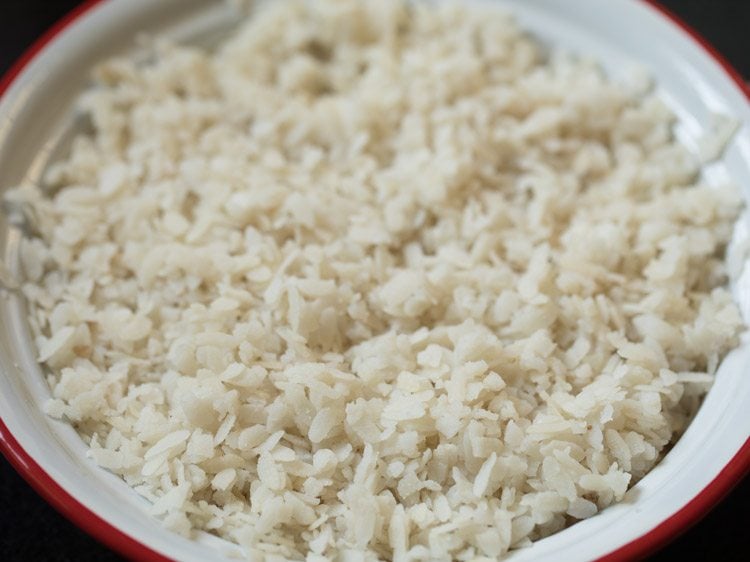
8. Sprinkle ¼ teaspoon turmeric powder, 2 to 3 teaspoons sugar and salt as required. You can add less or more sugar, as per your taste preferences.
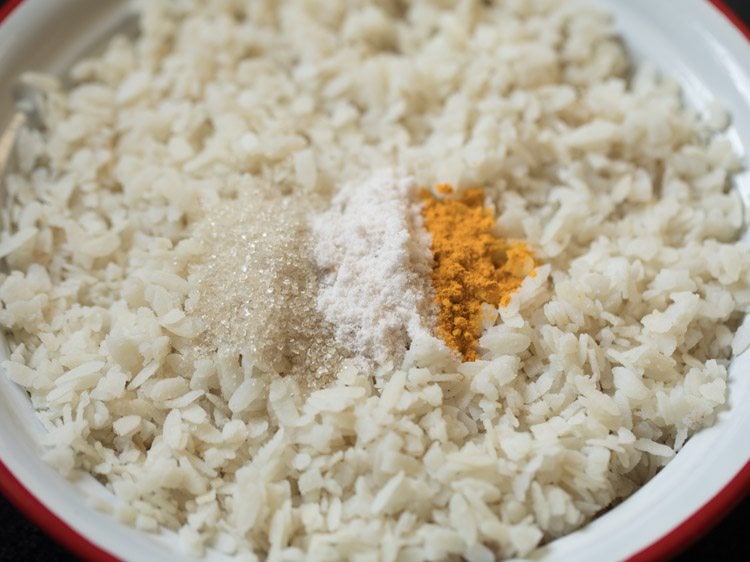
9. Lightly mix with a spoon or with clean hands.
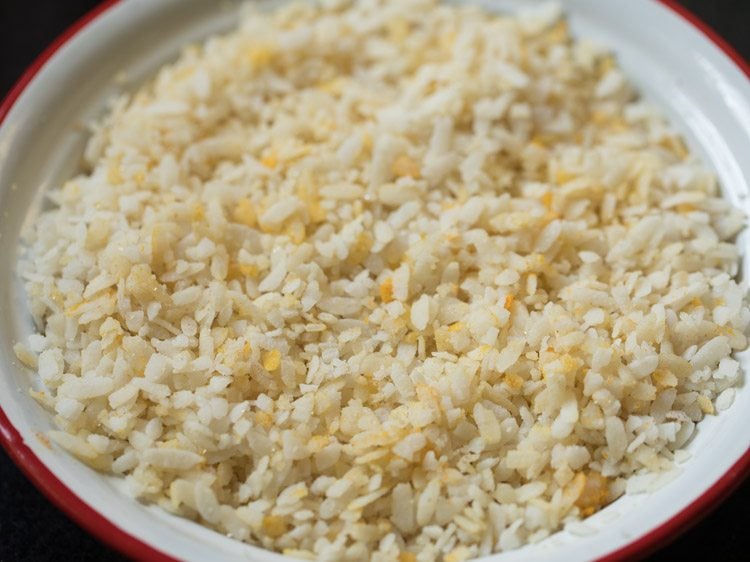
Making Indori Poha
10. Heat 2 tablespoons oil in a heavy kadai or pan. Keep flame to low or medium-low, add 1 teaspoon mustard seeds and let it crackle.
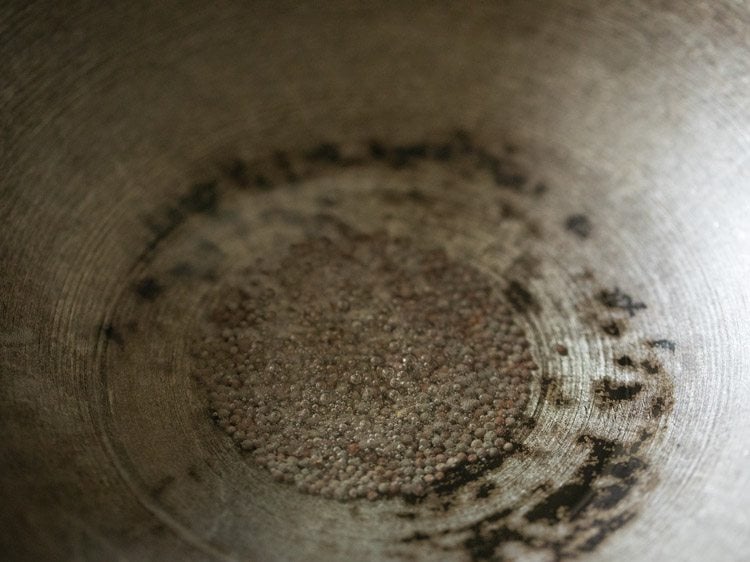
11. Then, add 1 teaspoon fennel seeds (saunf).
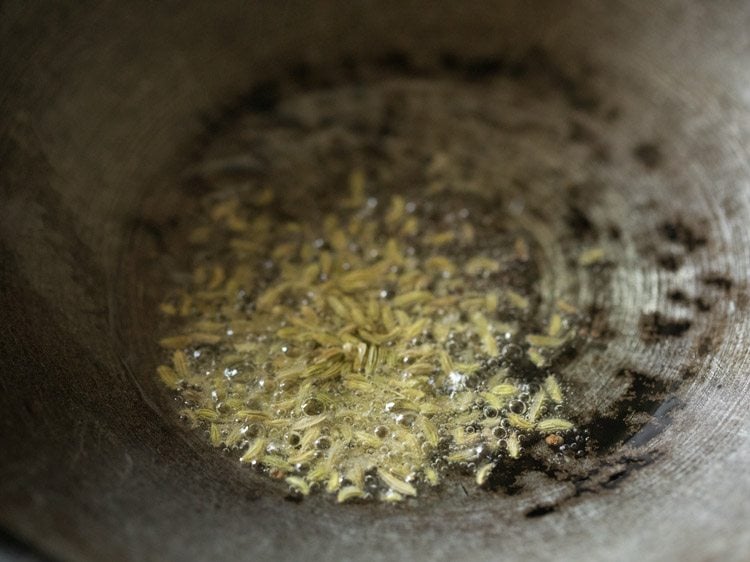
12. Let the fennel seeds splutter.
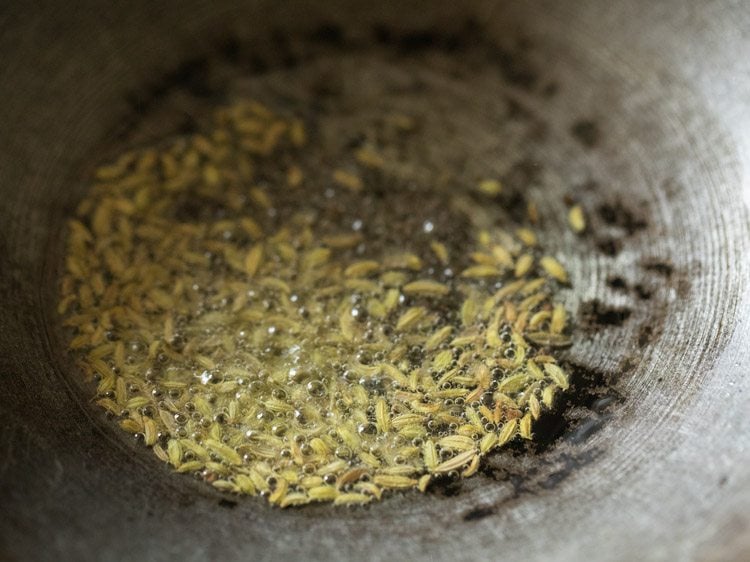
13. Add chopped green chili. At this step, you can add curry leaves if you want. For small kids, you can skip green chilies.
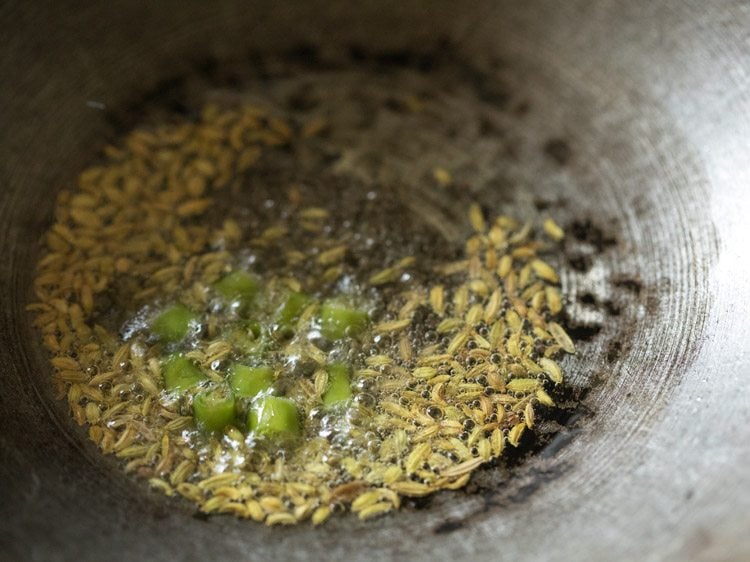
14. Stir and sauté for a few seconds.
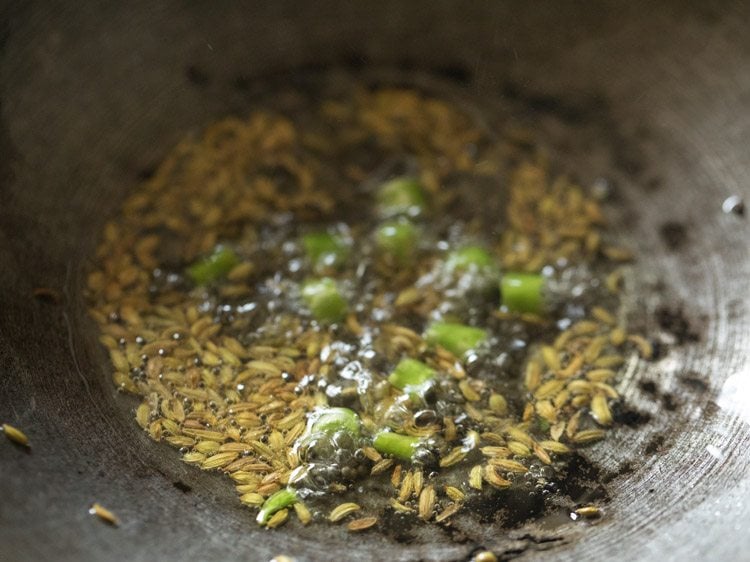
15. Keep the heat to low and add the poha.
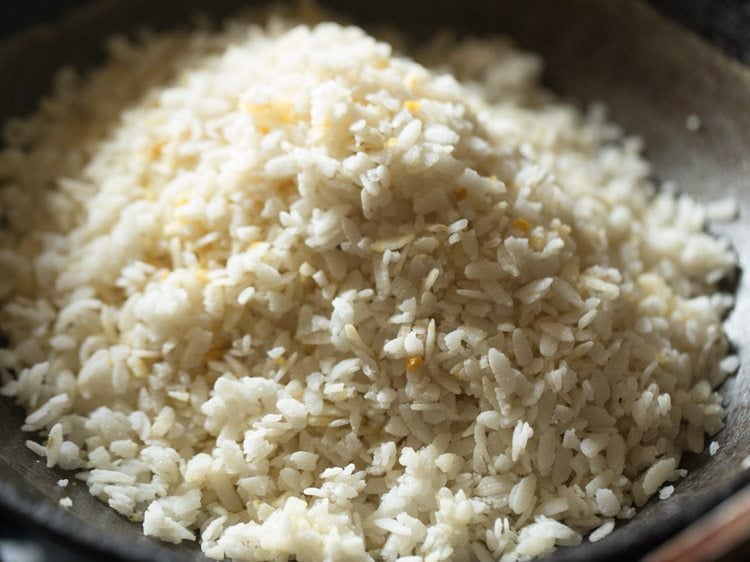
16. Gently mix poha with the tempering till the color of poha changes to a light yellow.
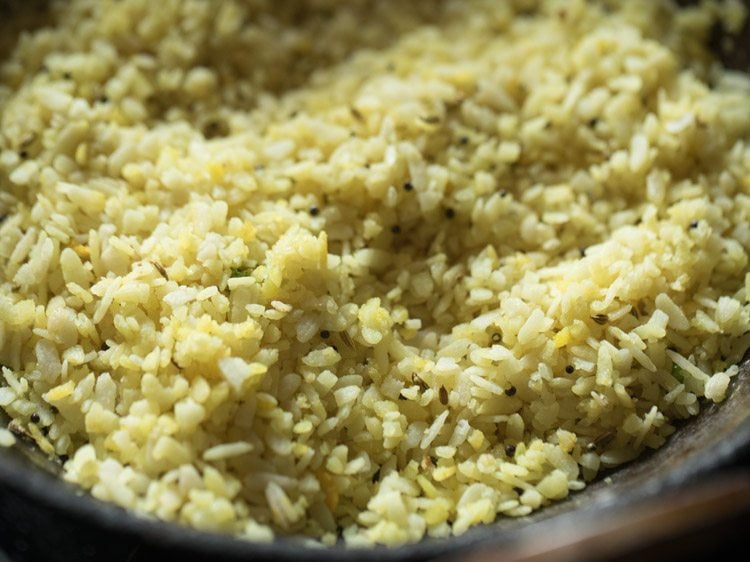
17. Cover kadai or pan with lid and steam the poha on low heat for about 1 to 2 minutes.
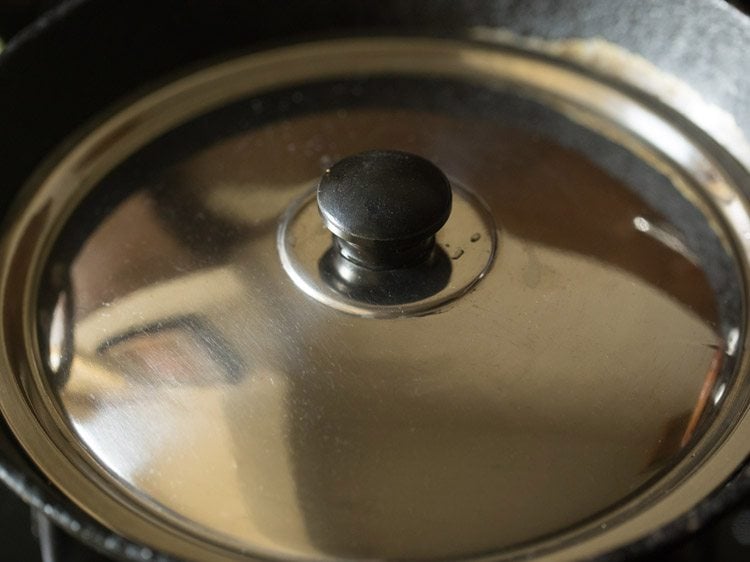
18. After 1 to 2 minutes, remove the lid and stir again. Switch off the heat.
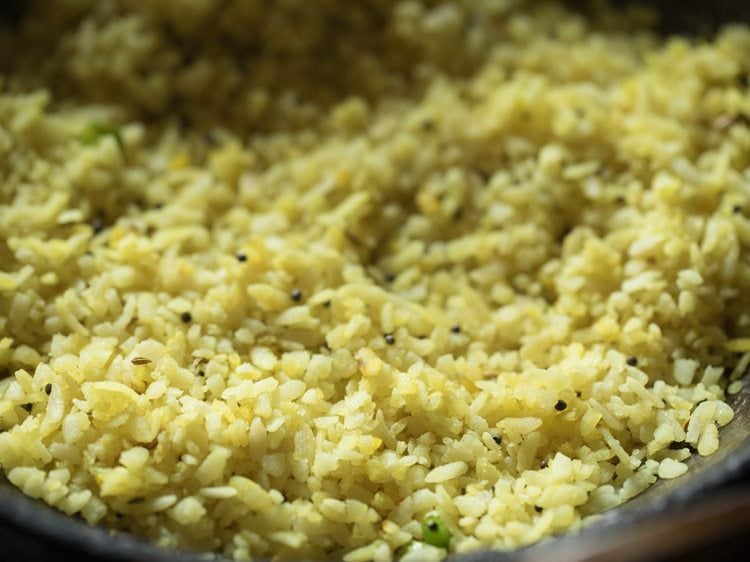
19. Now, take the hot poha on a plate.
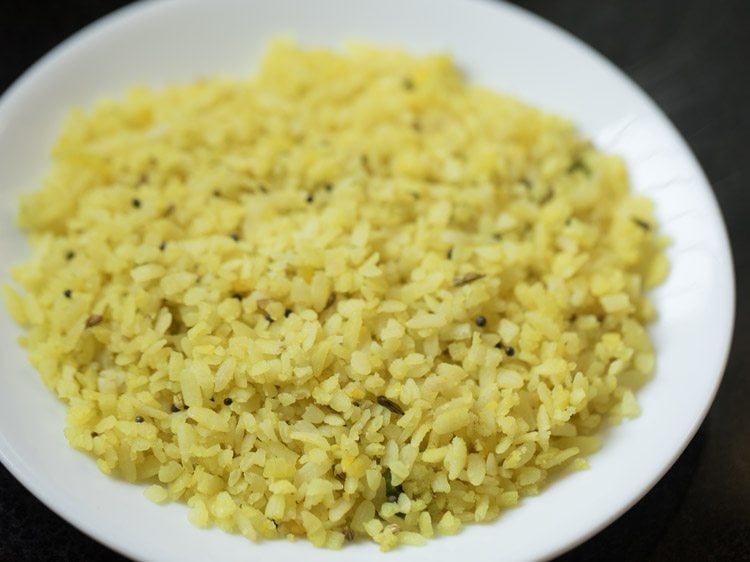
20. Top with some chopped onions and chopped coriander leaves.
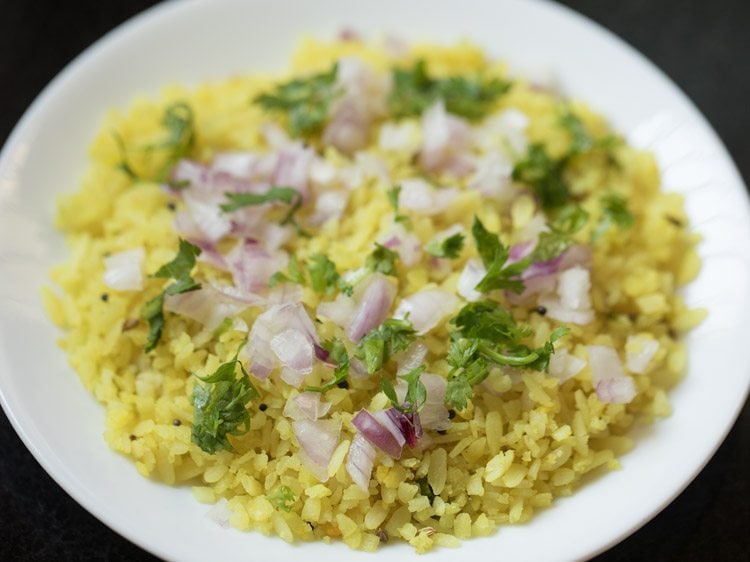
21. Sprinkle jeeravan masala on top. You can add 1 to 2 pinches of jeeravan masala or more. Jeeravan masala is spicy. So, add depending on spicy you like your food to be.
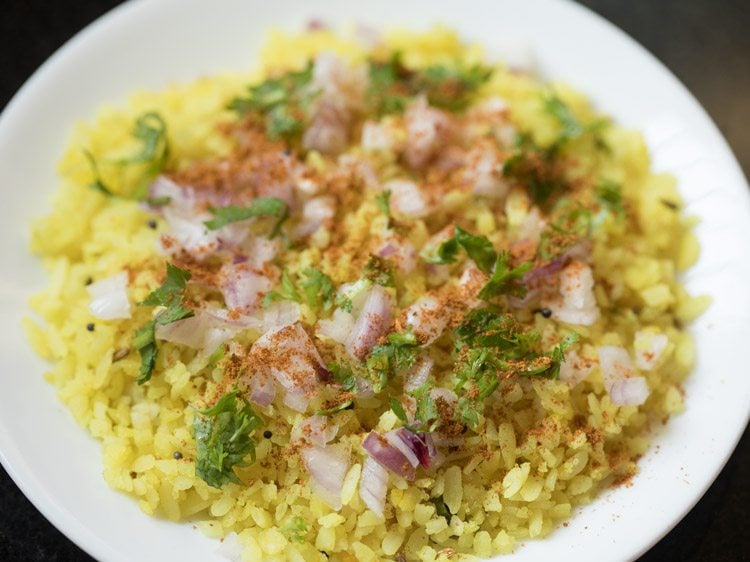
22. Add pomegranate arils. You can add the quantity of toppings as per your preferences.
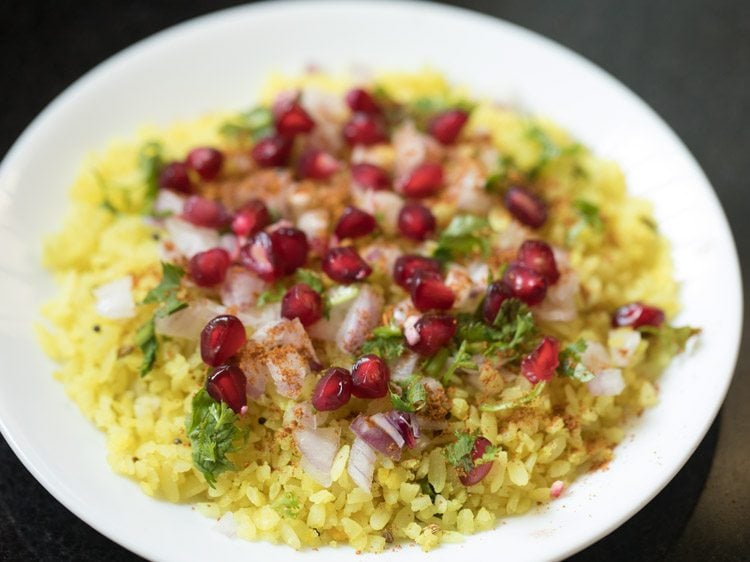
23. Top with masala boondi or khara boondi (nukti).
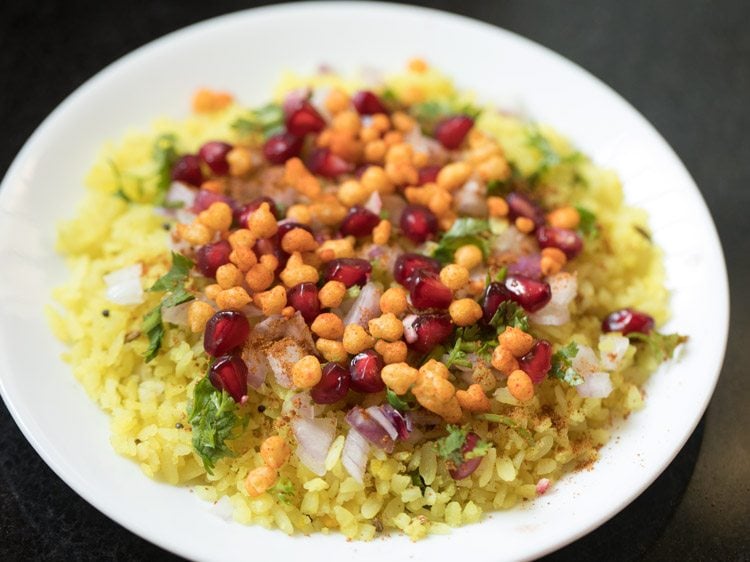
24. Now, top with Indori sev or Ratlami sev. You can also use masala sev, laung sev or aloo bhujia.
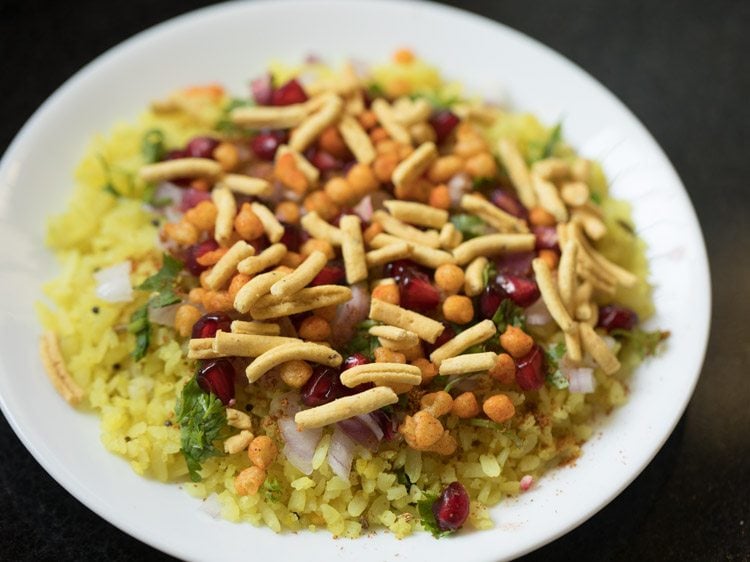
25. Squeeze some lemon on top.
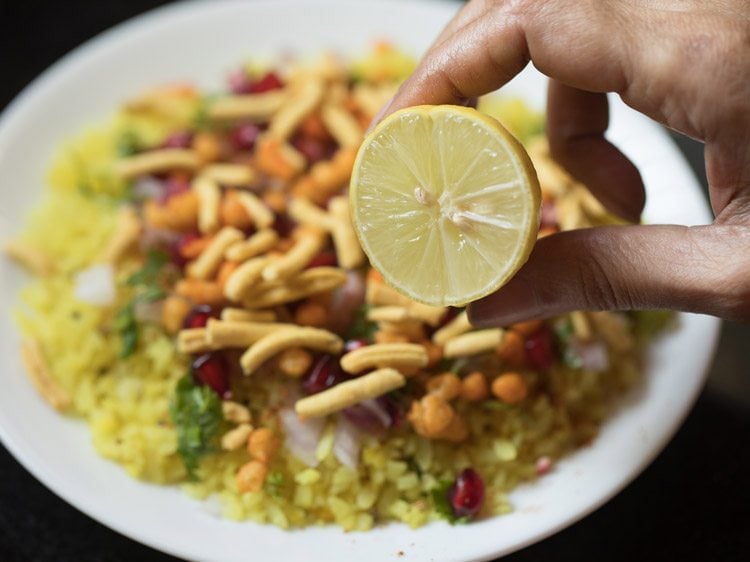
26. Assemble the Indori Poha in a similar way on plates and then serve them straightaway.
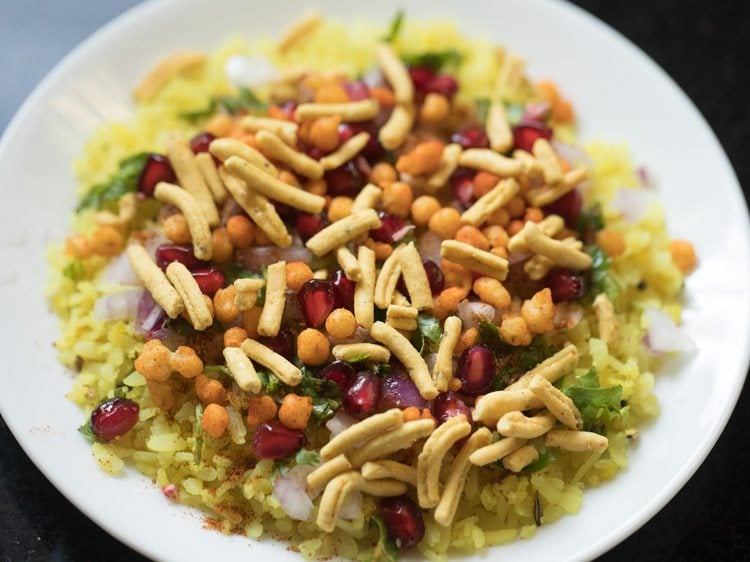
Expert Tips
- Make sure to use the thick poha variety to make this dish.
- While rinsing the poha, gently mix and swirl it with your hands. Ensure not to rinse too much. As then, it gets mushy and breaks. The drained poha should remain intact, whole and separate.
- If the poha is not soft, you can sprinkle a few drops of water on it in a strainer till it gets soft.
- In case you don’t have jeeravan masala and can’t source it either, mix ¼ teaspoon coriander powder, ¼ teaspoon cumin powder, ¼ teaspoon garam masala powder, ¼ teaspoon red chili powder, 1 pinch black salt and 1 to 2 pinches ginger powder (saunth) and use it instead.
- Adjust the quantity of sugar in the dish, as per your liking. You can even add curry leaves with green chilies in it. If making for kids, skip adding green chilies.
- You can skip adding the pomegranate and use any masala or khara boondi in place of the special nukti. You can also add quantity of toppings as per your preference.
More Snacks Recipes To Try!
Indian Street Food Recipes
Indian Street Food Recipes
Indian Street Food Recipes
Breakfast Recipes
Please be sure to rate the recipe in the recipe card or leave a comment below if you have made it. For more vegetarian inspirations, Sign Up for my emails or follow me on Instagram, Youtube, Facebook, Pinterest or Twitter.
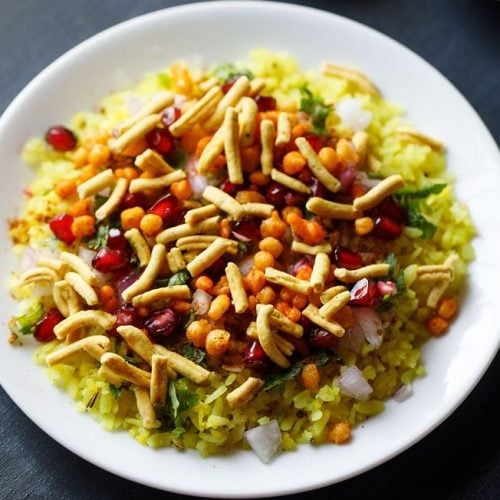
Indori Poha
Ingredients
for mixing
- 2 cups thick poha
- ¼ teaspoon turmeric powder
- 2 to 3 teaspoons sugar or add as per taste
- salt as required
other ingredients for indori poha
- 2 tablespoons oil
- 1 teaspoon mustard seeds
- 1 teaspoon fennel seeds
- 1 green chili – chopped
- ¼ to ⅓ cup chopped onions
- ¼ cup indori sev or add as required
- ¼ cup chopped coriander leaves
- jeeravan masala as required
- ¼ cup pomegranate arils – optional
- ¼ cup masala boondi (nukti)
Instructions
preparation
- First get all the ingredients ready for indori poha.
- Jeeravan masala is one of the special ingredient masala that is added in indori poha.
- If you do not have jeeravan masala then mix ¼ teaspoon coriander powder, ¼ teaspoon cumin powder, ¼ teaspoon red chilli powder, ¼ teaspoon garam masala powder, 1 pinch black salt and 1 to 2 pinches of ginger powder. Use this spice mix instead of jeeravan masala.
rinsing poha to make indori poha
- Take 2 cups thick poha in a colander or strainer.
- Begin to rinse the poha in clean running water twice or thrice.
- Gently mix and swirl with your hands while rinsing poha. Make sure that you do not rinse it too much or else it breaks and gets mushy. While rinsing, the poha absorbs enough water and it becomes soft.
- Drain the water. The poha must become soft but remain intact, whole and separate. If the poha does not become soft, sprinkle few drops of water on the poha in the strainer till they get softened.
- Take the poha in a mixing bowl.
- Sprinkle turmeric powder, 2 to 3 teaspoons sugar and salt as required in the poha. You can add less or more sugar as per your taste preferences.
- Just lightly mix with a spoon or with clean hands.
making indori poha
- Heat 2 tablespoons oil in a heavy kadai or pan. Keep flame to low or medium-low and add 1 teaspoon mustard seeds and let them crackle.
- Then add 1 teaspoon fennel seeds. Let the fennel seeds splutter.
- Add 1 green chili (chopped). stir and sauté for a few seconds.
- Keep flame to low and add the poha.
- Gently mix poha with the tempered ingredients till the color of poha changes to light yellow.
- Cover kadai or pan with lid and on a low flame steam poha for about 1 to 2 minutes.
- After 1 to 2 minutes remove the lid and stir again. Switch off the flame.
- Now take the hot poha in a plate.
- Top with some chopped onions and chopped coriander leaves.
- Sprinkle jeeravan masala on top. You can add 1 to 2 pinches of jeeravan masala or more. Jeeravan masala is spicy so add accordingly depending upon how much spicy food you like.
- Add pomegranate arils.
- Top with masala boondi and indori sev.
- Squeeze some drops of lemon juice from top.
- Assemble poha in a similar way in plates and then serve indori poha.
- Serve indori poha straight away.
Nutrition Info (Approximate Values)
This Indori Poha recipe from the archives was first published in March 2018. It has been updated and republished in April 2024.
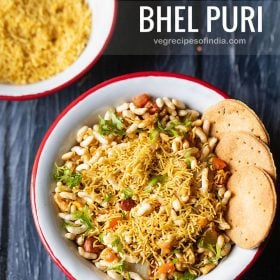
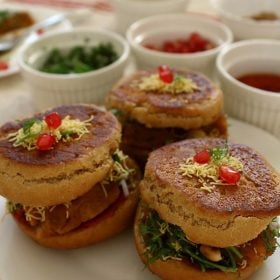
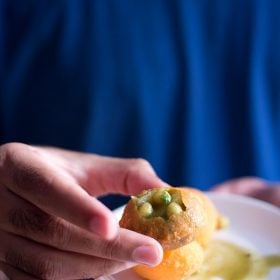
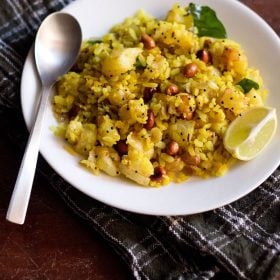

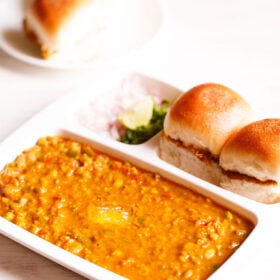

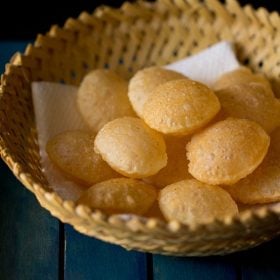








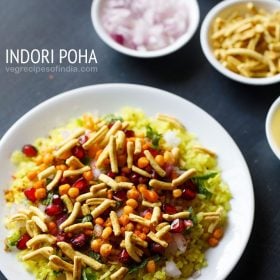
Thank you for this recipe. Made for breakfast today and was a hit. Looks like it’s going to be a regular thing 🙂
Lovely and thank your for sharing such a positive feedback.